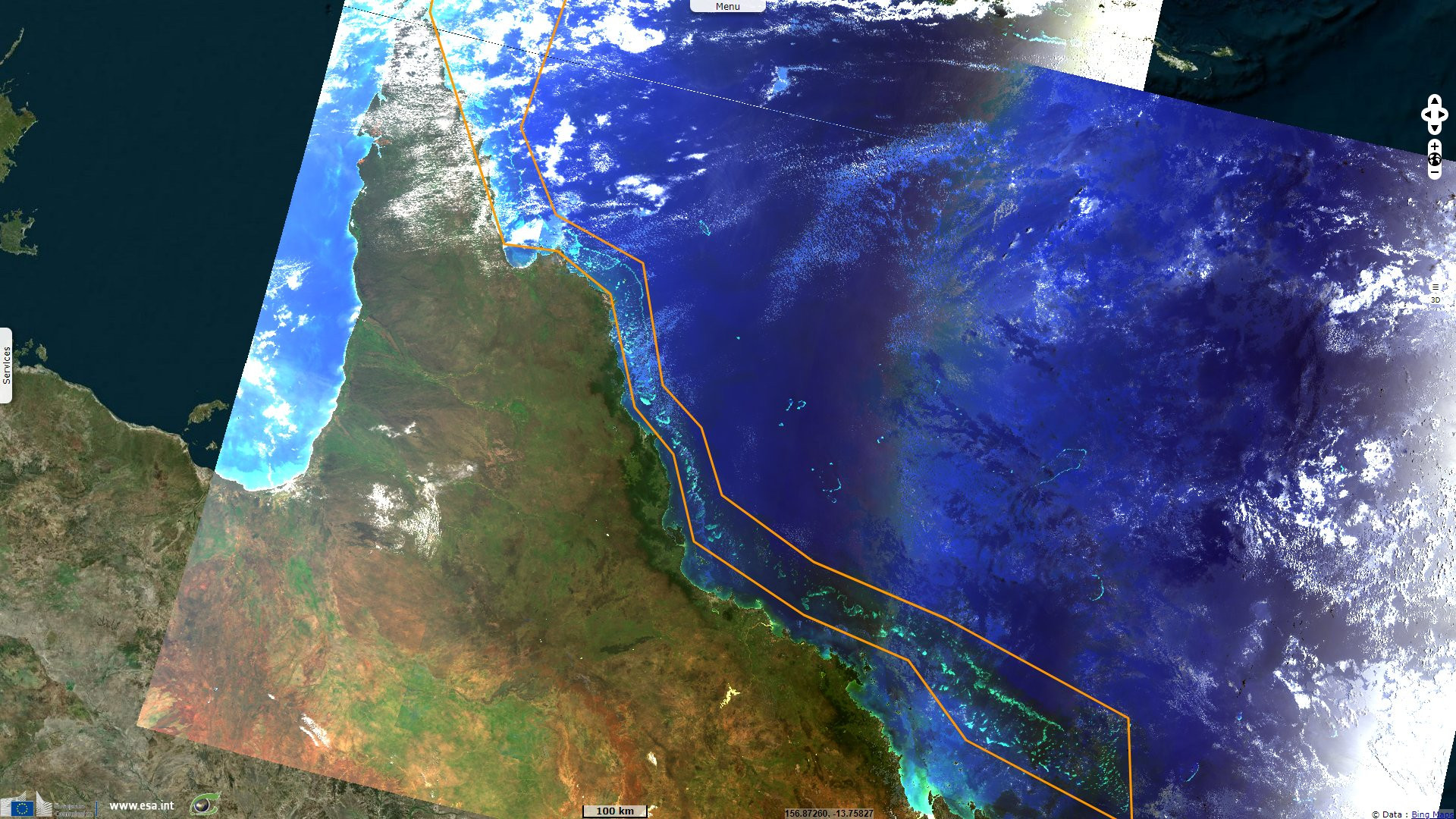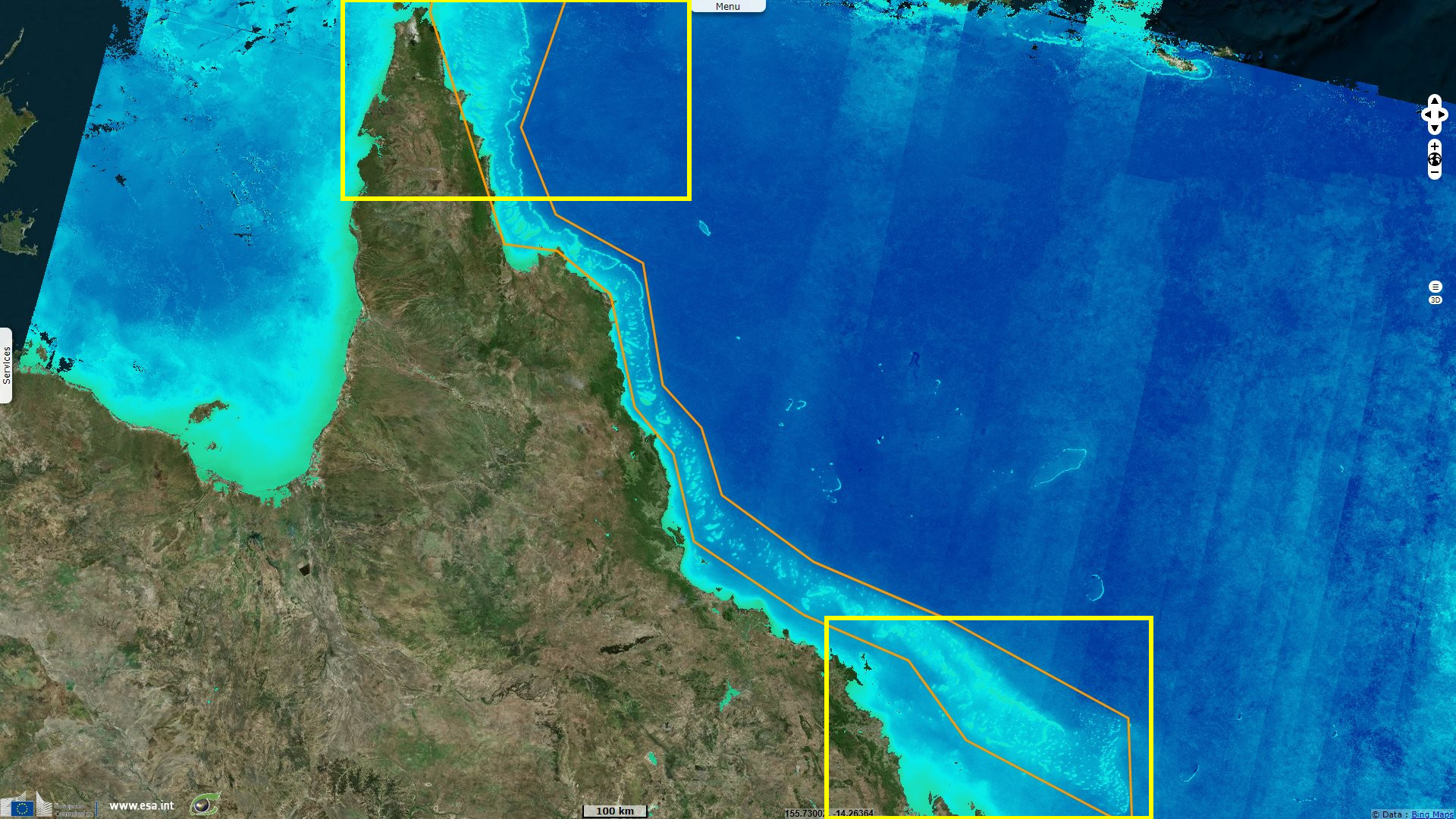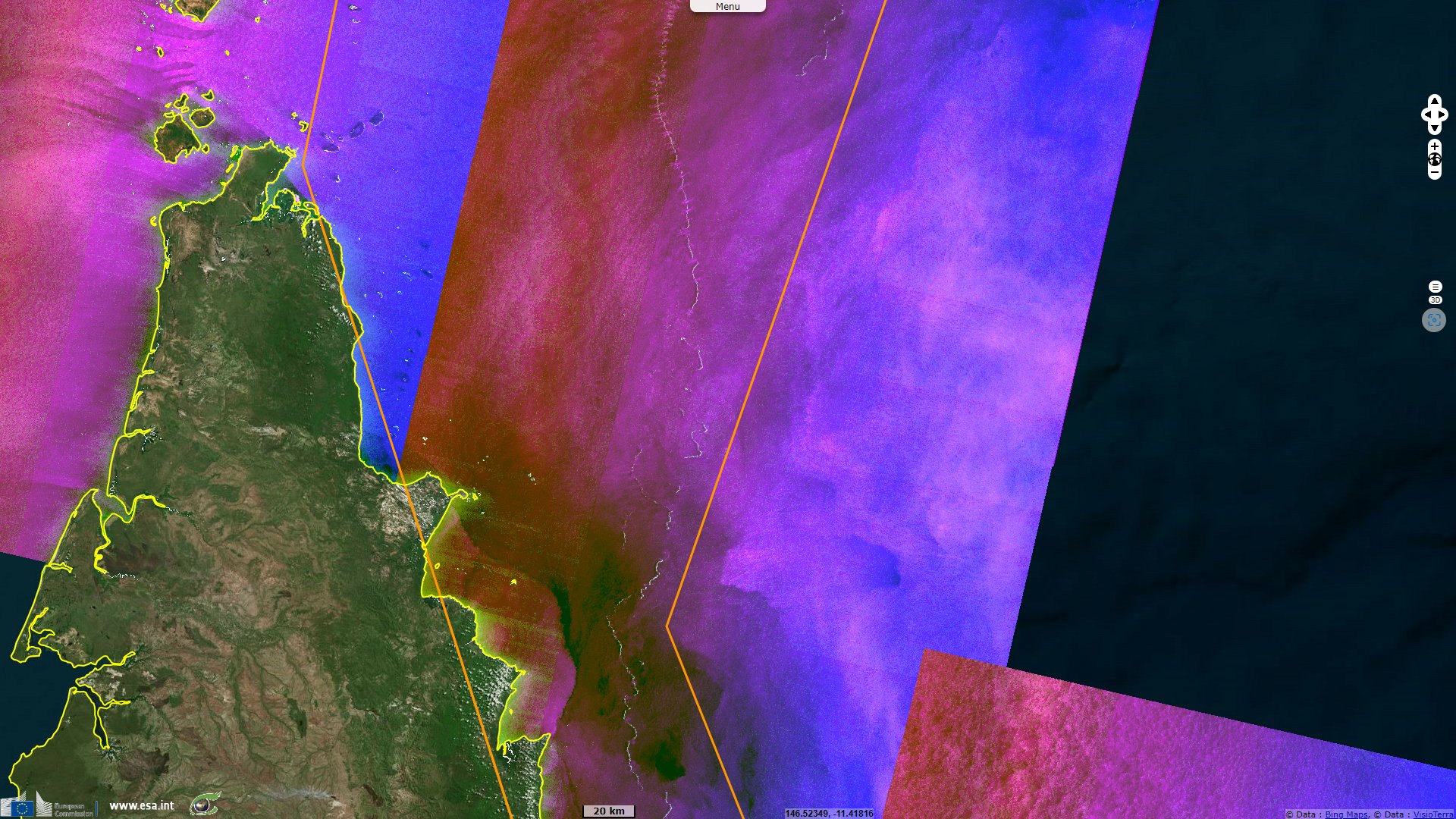World Oceans Day: the Great Barrier Reef, Australia
Sentinel-3 OLCI WFR acquired on 02 January 2022 at 00:01:35 UTC
...
Sentinel-3 OLCI FR & WFR acquired on 09 February 2022 from 23:50:19 to 23:53:19 UTC
Sentinel-1 CSAR IW acquired on 28 May 2022 at 19:28:30 UTC
Sentinel-1 CSAR IW acquired on 07 June 2022 at 19:44:25 UTC
...
Sentinel-3 OLCI FR & WFR acquired on 09 February 2022 from 23:50:19 to 23:53:19 UTC
Sentinel-1 CSAR IW acquired on 28 May 2022 at 19:28:30 UTC
Sentinel-1 CSAR IW acquired on 07 June 2022 at 19:44:25 UTC
Keyword(s): Marine, coastal, biodiversity, climate change, global warming, national park, UNESCO World Heritage, Australia
The Great Barrier Reef is the world's biggest single structure made by living organisms. It has been added in the UNESCO World Heritage list and is described by its sheet as follows: "As the world’s most extensive coral reef ecosystem, the Great Barrier Reef is a globally outstanding and significant entity. Practically the entire ecosystem was inscribed as World Heritage in 1981, covering an area of 348 000 square kilometres and extending across a contiguous latitudinal range of 14° (10°S to 24°S). The Great Barrier Reef includes extensive cross-shelf diversity, stretching from the low water mark along the mainland coast up to 250 kilometres offshore. This wide depth range includes vast shallow inshore areas, mid-shelf and outer reefs, and beyond the continental shelf to oceanic waters over 2000 metres deep."
"Within the Great Barrier Reef there are some 2500 individual reefs of varying sizes and shapes, and over 900 islands, ranging from small sandy cays and larger vegetated cays, to large rugged continental islands rising, in one instance, over 1100 metres above sea level. Collectively these landscapes and seascapes provide some of the most spectacular maritime scenery in the world. The latitudinal and cross-shelf diversity, combined with diversity through the depths of the water column, encompasses a globally unique array of ecological communities, habitats and species. This diversity of species and habitats, and their interconnectivity, make the Great Barrier Reef one of the richest and most complex natural ecosystems on earth."
"The Great Barrier Reef, extending 2000 kilometres along Queensland's coast, is a globally outstanding example of an ecosystem that has evolved over millennia. The area has been exposed and flooded by at least four glacial and interglacial cycles, and over the past 15 000 years reefs have grown on the continental shelf. During glacial periods, sea levels dropped, exposing the reefs as flat-topped hills of eroded limestone. Large rivers meandered between these hills and the coastline extended further east. During interglacial periods, rising sea levels caused the formation of continental islands, coral cays and new phases of coral growth. This environmental history can be seen in cores of old massive corals."
"Today the Great Barrier Reef forms the world’s largest coral reef ecosystem, ranging from inshore fringing reefs to mid-shelf reefs, and exposed outer reefs, including examples of all stages of reef development. The processes of geological and geomorphological evolution are well represented, linking continental islands, coral cays and reefs. The varied seascapes and landscapes that occur today have been moulded by changing climates and sea levels, and the erosive power of wind and water, over long time periods. One-third of the Great Barrier Reef lies beyond the seaward edge of the shallower reefs; this area comprises continental slope and deep oceanic waters and abyssal plains."
"As the world's most complex expanse of coral reefs, the reefs contain some 400 species of corals in 60 genera. There are also large ecologically important inter-reefal areas. The shallower marine areas support half the world's diversity of mangroves and many seagrass species. The waters also provide major feeding grounds for one of the world's largest populations of the threatened dugong. At least 30 species of whales and dolphins occur here, and it is a significant area for humpback whale calving. Six of the world’s seven species of marine turtle occur in the Great Barrier Reef."
It has survived millennia, going through at least four glacial and interglacial cycles, yet the speed of the present climate change might not let the Great Barrier Reef enough time to adapt. In 2020, a study found that the Great Barrier Reef has lost more than half of its corals since 1995 due to warmer seas driven by climate change. As global warming continues, corals will not be able to keep up with increasing ocean temperatures.










